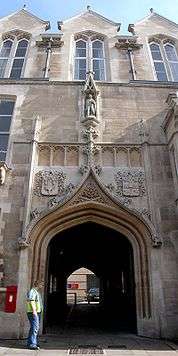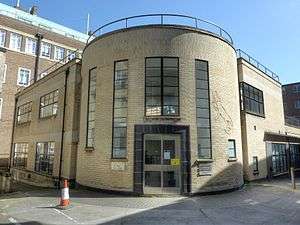New Museums Site


The New Museums Site is a major site of the University of Cambridge, located in the centre of the city, on Pembroke Street and Free School Lane, sandwiched between Corpus Christi College, Pembroke College and Lion Yard. Its postcode is CB2 3QH. The smaller and older of two university city-centre science sites (the other is the Downing Site), the New Museums Site houses many of the university's science departments, lecture halls and examination rooms, as well as two museums.
Formerly the site of the university Botanic Garden (which is now between Hills Road and Trumpington Road in the south of the city), the New Museums Site is an eclectic mixture of grand Victorian buildings erected between 1870 and 1909, such as the Old Cavendish Laboratory; yellow-brick buildings from the 1930–40s, largely utilitarian with the exception of the Mond Building; and modernist glass-and-concrete buildings dating from the 1970s, such as the Materials Science and Metallurgy tower.
Several important scientific developments of the 19th and 20th centuries were made here, mainly at the Old Cavendish Laboratory, including the discoveries of the electron by J.J. Thomson (1897) and the neutron by Chadwick (1932), splitting the atom by Cockcroft and Walton (1932), mechanism of nervous conduction by Hodgkin and Huxley (1930s–40s), and DNA structure by Watson and Crick (1953).
Institutions and buildings
- Babbage Lecture Theatre
- Computer Laboratory — relocated to West Cambridge in 2001
- Central Science Library — formerly Scientific Periodicals Library
- Cockcroft Lecture Theatre
- Department of Chemical Engineering
- Department of History and Philosophy of Science
- Department of Materials Science and Metallurgy — relocated to West Cambridge in 2013
- Department of Social Anthropology
- Department of Social and Developmental Psychology
- Department of Sociology
- Department of Zoology
- Engineering Department — founded here 1875, relocated to Scroope House site in 1921
- Old Examinations Hall
- Old Cavendish Laboratory — former physics laboratory
- Phoenix — former university mainframe
- University Computing Service
- Whipple Museum of the History of Science
- Zoology Museum
Sources
- New Museums Site map
- Cambridge 2000 Project
- Janus entry
- A Hundred Years and More of Cambridge Physics
-

Entrance to The Old Examinations Hall
-

Entrance to The Zoology Museum
-

Mond building
References
Coordinates: 52°12′13″N 0°07′11″E / 52.2035°N 0.1196°E